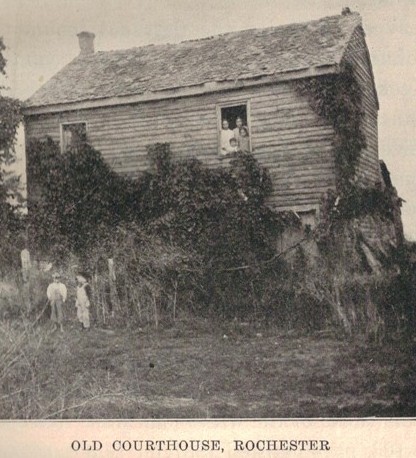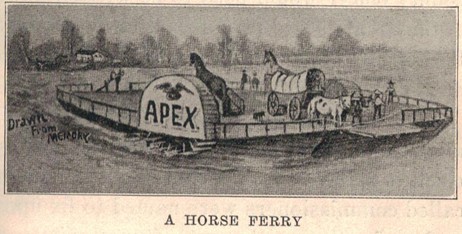II.
MANY COUNTIES IN PLACE OF TWO pgs 19-29
Neither of the two large counties�Dubuque and Demoine�which had been formed west of the Mississippi by the law of Michigan in 1834, was changed in any way until late in 1836. By that time, as already mentioned in the first chapter, they had come under the control of the Territory of Wisconsin. But during the two years which had passed the settlers had begun to fill the eastern part of the present State of Iowa, and smaller divisions could be made as they probably wished. It was not possible when counties were so large to manage all the business connected with the laying out of roads, the collecting of taxes, and a great many other things. By a law of Wisconsin, therefore, Demoine County was made into seven divisions and each one, of course, was given a name; and the next year Dubuque County was divided into fourteen new counties. In each instance the old names of Demoine and Dubuque were kept; the first came to be spelled Des Moines. At the same time the county seat towns of those counties were not changed. Thus we have today the very counties and towns and even townships which the Michigan law named in 1834.
Very few persons, probably, have any acquaintance with the arrangement of the new counties as they were formed. As they were set apart, they sometimes had too few settlers to be organized (that is to have officers) at once so that they were joined to other counties; just as the territories of Wisconsin and Iowa had been attached to Michigan. For example, the county of Clayton was laid out north of Dubuque County and its county seat town had the pretty name of Prairie La Porte. But that town is no longer on the map, since Guttenberg has taken its place. It is not strange that many of the early names are French because at an early day, before the United States owned this land called Iowa, there were many French in that part of the Louisiana Purchase. When Clayton County was formed, Fayette County was north and west of it and Fayette boundaries extended to the limits of the Indian land. Delaware and Buchanan Counties were joined to Dubuque for the purpose of government and so they had no county seat towns. In Jackson County Bellevue was the seat of government, and to that county Jones, and Linn, and Benton counties were attached. It will be seen that the officers in Jackson County had to attend to the duties belonging to the four counties.
Clinton County was to be joined to Scott County; and the county seat town was to be either Davenport or Rockingham, as the voters might decide. Rockingham was some distance south of Davenport and for some time it was a rival of that city. Before the contest was finally decided, it became very exciting and more than one election was held to settle the question. At the first election held in 1838 the voters were to come to the hotel of Mr. H. W. Higgins at the town of Rockingham, at the hotel of Mr. John H. McGregor at Davenport, and at two private houses in the county. At these four places all the voters of the present county of Scott were to assemble on a certain day. It has been said that many who had no right to vote at all were brought in so that the election was not considered lawful. In fact, there were lawless men who did not care which place was selected, if they were paid for the voting. Such things have happened very often since then, although it has been made much harder for any one to vote unlawfully. The decision in Scott county was finally made in favor of Davenport.
That was only one of the very many battles with votes over the location of the county seat town in the new counties. For example, when Clinton County was separated from Scott County, the voters again were to decide between Lyons and Camanche; and in Cedar County between the old town of Rochester, and Tipton, a new place staked out on the prairie and having no houses at all. Sometime before the big county of Dubuque had been divided, the town of Rochester had sprung up on the Cedar River. It was settled in 1836 and the people were certain that it would become a great city like the one in the state of New York for which it had been named. Of course, it expected to become the county seat; and yet the voters decided on the new town far away from the Cedar River. Even today there is an old building at Rochester which people who know call the court house. In fact, all the houses there are so old-fashioned that the place is very interesting.





